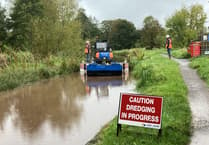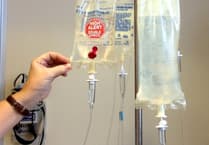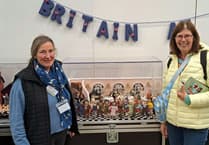THE work of a ranger is varied; from dry-stone walling to running a children’s event, from digging a ditch to writing up a newsletter and litter-picking to counting butterflies.
The latter is what I’ll be talking about in this blog, not just counting butterflies but some of the wider wildlife monitoring we do and why.
Butterflies are extremely sensitive to climate, temperature and light levels and as such make a good indicator species for how a habitat is doing; if butterflies are doing well there is a good chance other species are also flourishing. We have a number of butterfly transects on our land, my colleague runs one at Lanlay Meadows near Cardiff and I set up two new ones last year, one on the Skirrid near Abergavenny and the other on one of our tenant farms.
The transect on the Skirrid has been set up to get baseline data before we commence a five year plan of woodland management involving coppicing, thinning, conifer removal and opening up the rides.
All of this work will open up the woodland and let more light in, which in turn should promote more flowering plants and mean more butterflies!
The transect is a weekly count from the beginning of April to the end of September, we walk a defined route recording all the butterflies we see along the way. Over the course of summer 2017 we saw green-veined whites, orange tips, holly blues, silver-washed fritillary, gatekeeper, red admiral, meadow brown and lots of speckled woods.
The work in the woodland started this winter and in summer 2018 we’re hoping to see an increase in numbers and species diversity. Species like silver-washed fritillary like open glades and rides for flight and shady areas for breeding so we could potentially see an increase in this charismatic butterfly. We need volunteers who have good butterfly identification skills to help out in 2018, if this sounds like you please do get in touch.
Since summer 2016 we have been keeping tabs on the health of the River Tarell around our offices in the Tarell Valley near Brecon. We have two tenanted farms in the area as well as our base so monitoring the river lets us know if anything nasty or unwanted is leaching into the river. How do you monitor a river? By getting to know the mini beasties that call it home.
Many flies have their larval stage underwater living on the rocks and in the sediment, they need clean water and are very sensitive to pollutants making them great indicators of river quality.
The monitoring involves three minutes of kick-sampling the river bed and a one minute large rock search. The fruits of such labour are put into trays and divided up into eight easily identifiable species (any other species present are recorded in the notes) and counted to get an abundance category for each species. If at any point a sample falls below our ‘trigger’ level which is set by Natural Resources Wales, then we know there is a pollutant in the river. By sampling at set points along the way we should also be able to identify where the pollutant is entering the river.
There are some fascinating natural phenomena going on in our waterways, like the caddisfly that builds a protective shelter for itself out of bits of stone. I love finding them, their cases are beautiful and a real natural wonder. An interesting fact is that people use caddisfly larvae to make jewellery, have a look on the internet it is fascinating.
We carry out lots of other surveys as well to inform our work and to stay in tune with the wildlife that is present on our land; red grouse counts to help inform heathland management, vegetation surveys, red wood ant monitoring, breeding bird surveys and pond surveys. Too much for one blog!
Kate Jones, commons link ranger




